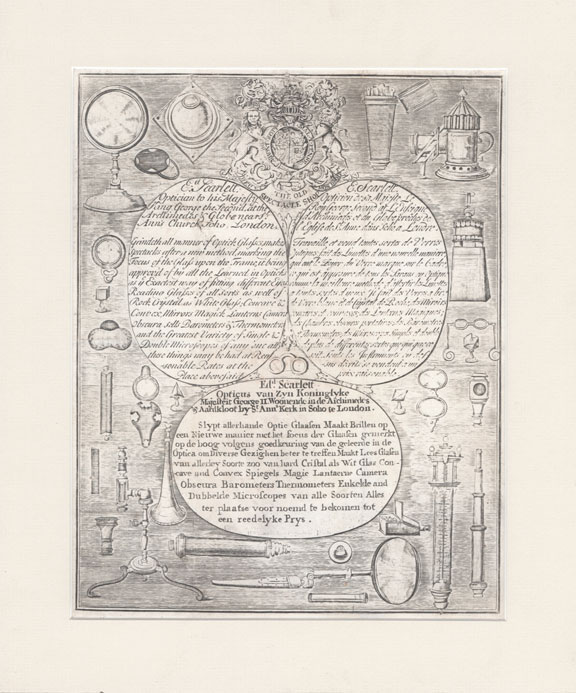The early 1700s saw the emergence of daily newspapers for the man on his way to work, or sitting in the coffee house. Just as now, a significant percentage of the population suffered with imperfect sight. Spectacles and magnifiers of all sorts had been available for two centuries, but it was the advent of the newspaper which saw them really take off.
Spectacle-makers produced huge ranges of tortoiseshell, horn and whalebone (super-flexible and hard to break) as well as silver. They could be purchased off-the-shelf with the prescription or ‘focus’ written on the arm, or made-to-measure. Edward Scarlett of Soho, working in the 1730s, was the most famous of the early makers, with his spectacles being marketed as having ‘the Exactest way of fitting different Eyes’. He popularised arms on spectacles (usually of the pince-nez type before) and catered for different activities such as reading or sewing. The picture here is his trade card.

